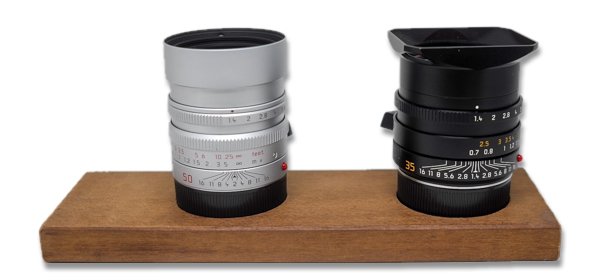
By Devon Buy
“If I can hold a
250-year-old Italian violin reliably in my hand without a strap over my
shoulder, I should do fine without one on my camera…”
Many people have asked me
why I do not use straps with my cameras, and especially on all my Leica
cameras. My reason is simple. If for any reason the camera should fall to the
ground, it should be because I had dropped it, and not because of the failure
of the strap or strap lugs on the camera body, or any other points of failure
in between. It may sound silly, but there’s a bit of a logic to that. The
former is within my control, and the latter is beyond my control. Also from
experience, I’ve had bags fall to the ground because the strap buckle broke,
but I don’t recall ever having dropped anything precious out of my hands. All
the brass in the Leica M Typ 240 and chrome silver version Summilux-M 50mm
f/1.4 makes for a seriously hefty load, which adds to another worry about
straps and any part in between giving way. Then again, maybe my concerns are
unfounded…I mean, how many people have actually dropped their cameras from a
worn or broken strap? If you’re one of them, please tell about your experience
in the Comment section at the end of this article.
“…it now becomes possible
for lens swapping to be accomplished with only one free hand.”
Well, the article today is
not about straps and heavy cameras, but the little intro above is mainly the
reason why I have designed a custom lens holder to use in my bag. With one hand
already holding the camera (instead of hanging around the neck leaving both
hands free), I needed a “system” that would enable me to change lenses on the
go (read: walking or standing up and not seated somewhere and placing the
camera down).
With a block of wood
mounted with a couple of rear lens caps to hold your lenses in your bag, it now
becomes possible for lens swapping to be accomplished with only one free hand.
Below are the steps for making my own lens holder, something which I have found
to be very useful shooting concerts and events.
Preparation and Raw
Materials
Before we begin, there are
a few materials and tools we will need to gather. These materials are necessary
to make the lens holder as I have designed it. If you have a different design
but something that runs along a similar principle, you may add or subtract from
the items listed below. For my lens holder, these were needed:
1.Block
of wood
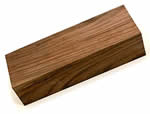
This will be the
foundation of the lens caps and lenses, so you would want something firm but as
lightweight as possible. Leica M lenses are already heavy as they are, and we
wouldn’t want to introduce any extra weight into our camera bags. As this will
be sitting quite securely inside the bag, the block of wood doesn’t really need
to be robust. However, with this part being the most variable, you will need to
select one depending on how elegant you want your final lens holder to look.
The one I will be using isn’t exactly lightweight, but it has been sitting in
my home waiting to serve some purpose, plus it is of roughly the right size for
my bags.
2. Rear lens caps

You will need to source
for a few of these online, because you’d want to avoid using your original
Leica rear lens caps for this. I bought a set of 5 on eBay, and it really
doesn’t matter where they come from or where they are made, as long as they
work. Buy the best quality you can find. Buy the original Leica ones if you
want. I realise it is better to have more of these, than just enough. Try and
get sets which include the screw-on covers for these rear lens caps as well,
instead of just the rear lens cap itself. I will explain why later.
3. Small
wafer-type (flat-top) screws

You will need at least 3
to 4 wafer-type screws per lens cap for this. So if you’re going to make a lens
holder for 3 lenses, you will need 12 screws. The dimensions of the screw will
very much depend on the thickness of your block of wood, and any Gauge number
between #2 and #6 (2 to 3mm shank diameter) should do fine. The screws must be
wafer heads and not pan heads (flat-bottom rounded top).
4. Foam sheet

This is optional, but
recommended as I will also explain in the steps below. I opted for a black foam
sheet (which like the block of wood, was lying around at home waiting to serve
a purpose), but any stable material that is non-moisture absorbing and doesn’t
crumble over time is suitable. The foam will need to be cut out to 43mm
diameter, so any other similar material you can find (e.g. cork or felt padding
for under chairs and tables) should be ok.
5. Tools

You will need some tools
to shape and put all the items above together. In my work below, I used a drill
press with a 50mm-Forstner bit, my Milwaukee M12 Fuel Hackzall Recip Saw to saw
the wood block to size, the Milwaukee Rotary Tool and some sandpaper to finish
the wood surface, and the Milwaukee Drill Driver with a 2mm drill bit and
countersink bit for the holes on the lens cap. Hot glue gun and double-sided
tape are optional, which I could have used in this little project as well, but
I had opted not to. You will also need a Phillips screwdriver, an awl, a pencil
and a pair of scissors.
Once the plan for the
design and materials have been acquired, we may start with the crafting.
A. Measurements and
Woodwork
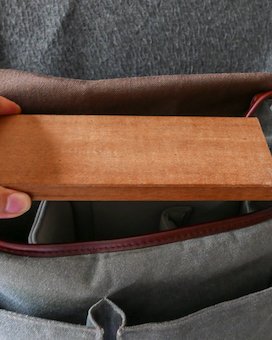
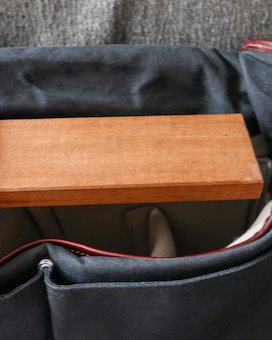
A1. Before starting, check
that the wood block is of suitable dimensions and that it will fit your bag
snugly without moving around too much inside. You may want to check this with a
few of your camera bags, as the lens holder may find itself in more than just
one bag. Here I check it against the insides of my ONA Prince Street and ONA
Brixton.
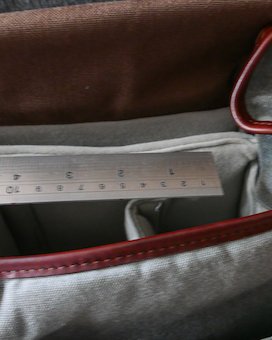
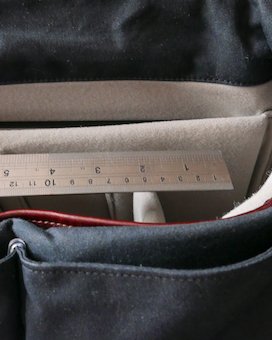
A2. Next, measure the
centre-to-centre dimensions in between your compartments. Also, the centre
point for the lens closer to the edge should be sufficiently spaced and not sit
too far from the interior side of the bag, so as not to waste too much space or
have too much space between lens body and bag interior side.
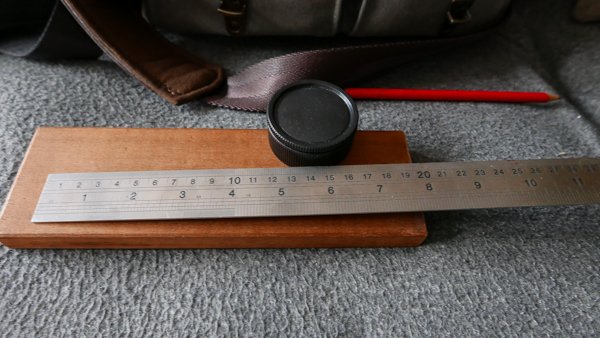
A3. Mark these two points
on the wood block with a pencil or awl. Check that these points also sit in the
centre on the wood block between the interior front and rear of the bag.
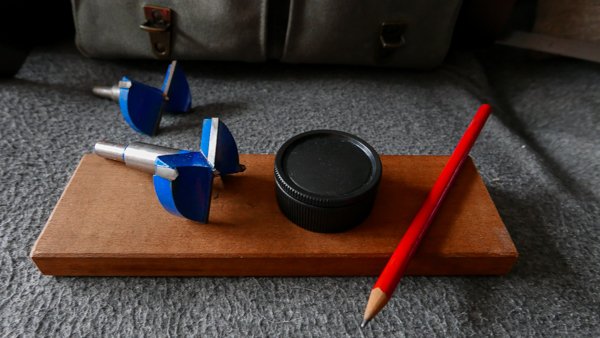
A4. To make the crater in
which the rear lens caps would sit on, a Forstner bit of 50mm diameter is required.
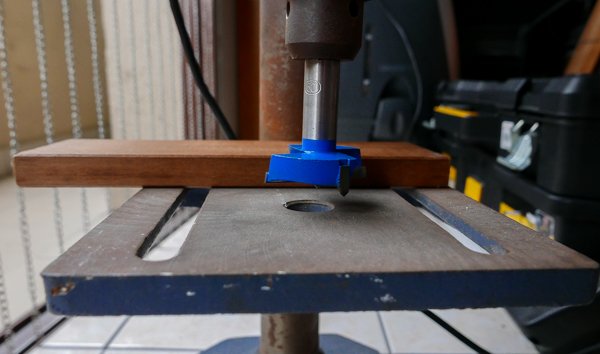
A5. Attach the Forstner
bit to the drill press and adjust the platform level with the wood block on it
to ensure that the Forstner bit drilling depth will not exceed the wood block’s
thickness…in order words, so that the Forstner bit does not drill all the way
through the wood block and leave you with a see-through hole.
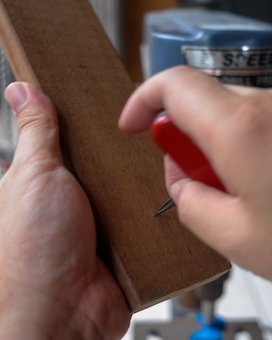
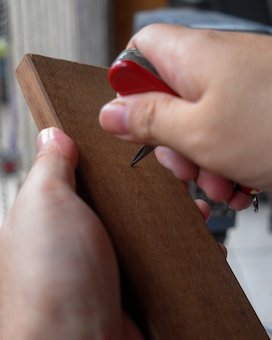
A6. If you have only
marked the centre points with a pencil in Step A3 above, now is the time to do
it with an awl. This will serve as a pilot hole for the Forstner bit during the
start of the drilling.
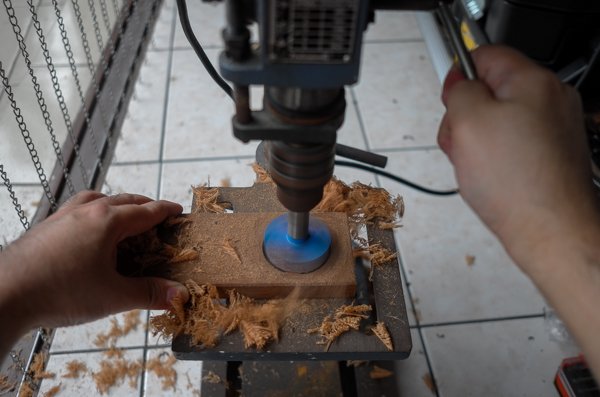
A7. Drill into the wood
block with the Forstner bit using the pilot hole as a guide.
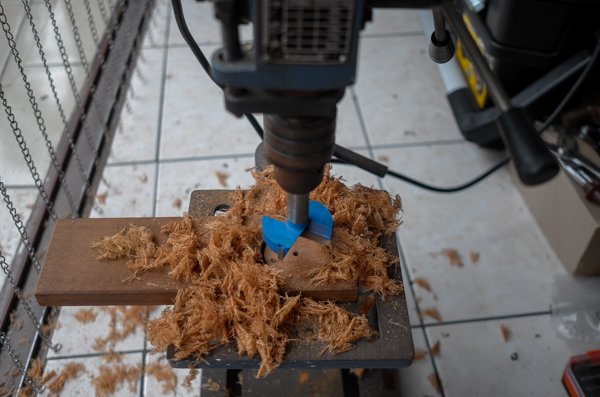
A8. Stop intermittently to
clear off wood shavings and allow the Forstner bit to cool down. The Forstner
bit will get quite hot after a while, so be careful not to touch
it.
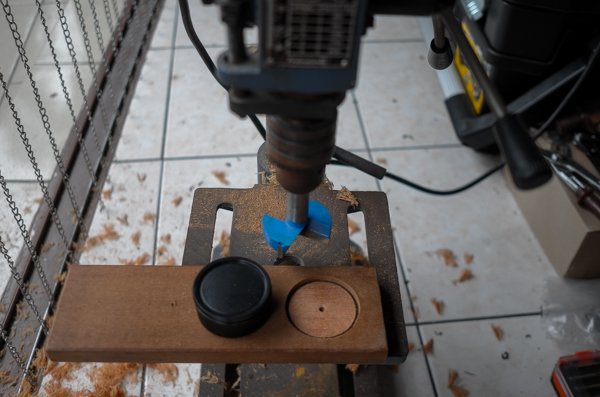
A9. You may also want to
take this opportunity to check that the rear lens cap sits in nicely within the
crater and that all is going well so far.
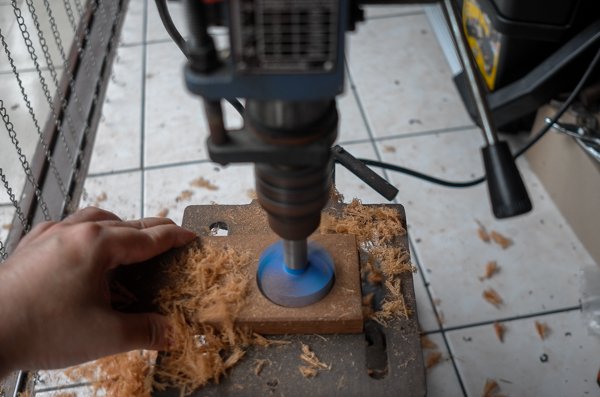
A10. Continue to drill all
the way down to the preset depth.
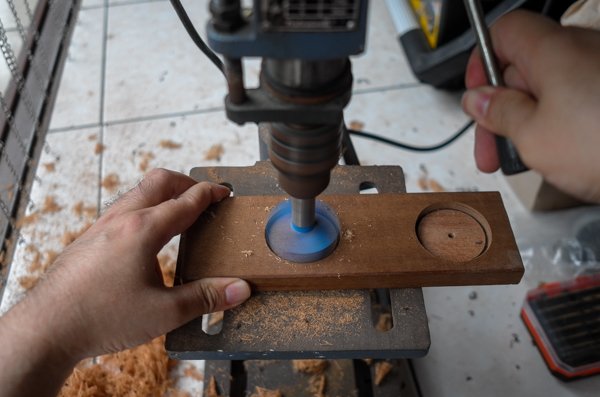
A11. After the first
crater is done, proceed with the second crater, and on with as many as you plan
for the lens holder. I’ve decided to go with a 2-lens holder here, but most
messenger bags will take 3 and even 4 lenses if the camera body is kept in
another bag. I plan to make another one that holds 3 lenses soon.
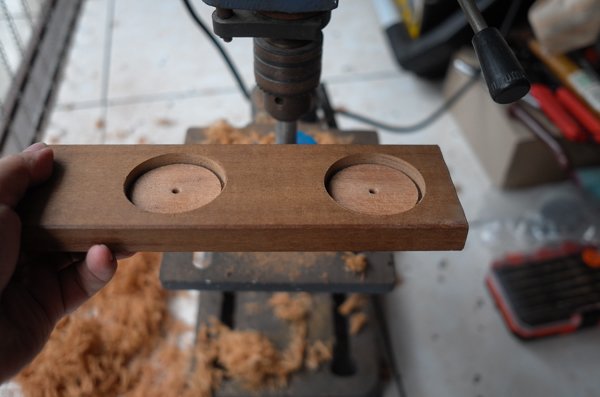
A1. With both craters
deeply carved in and completed, we can now start our work on the rear lens
caps.
B. Preparing and Mounting
the Rear Lens Caps
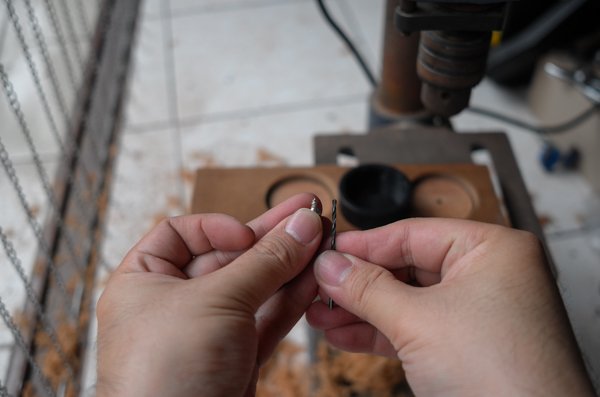
B1. We will now proceed to
drill some very small holes on the rear lens caps to allow them to be mounted
on the wood block.
Depending on the screw
size you will be using, select a suitable drill bit. I used one for a bore size
of about 2.0mm.
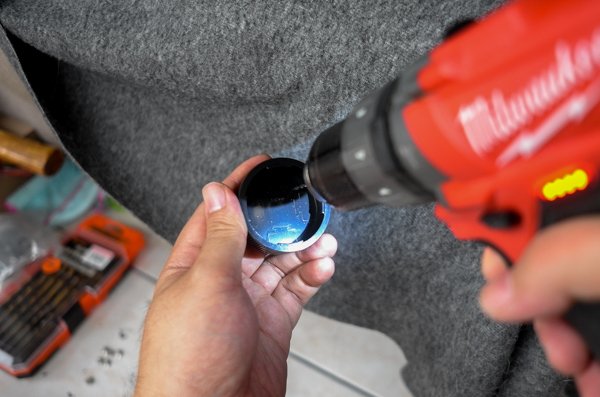
B2. Drill 4 holes on the
rear lens cap, as close to the circumference as possible, but with sufficient
space for the screw heads to sit. once they are fully screwed in. The screw
positions are placed further from the lens cap centre for stability, especially
for heavier lenses mounted on later.
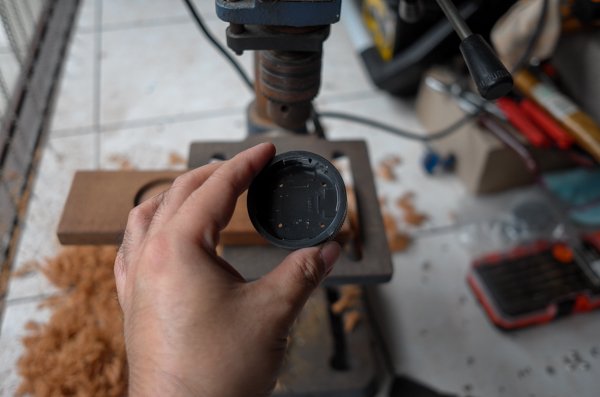
B3a. The finished holes
should look something like this on the inside…
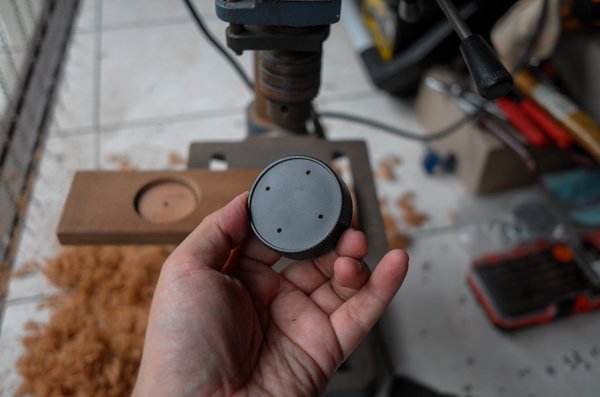
B3b. …and like this on the
underside of the lens cap.
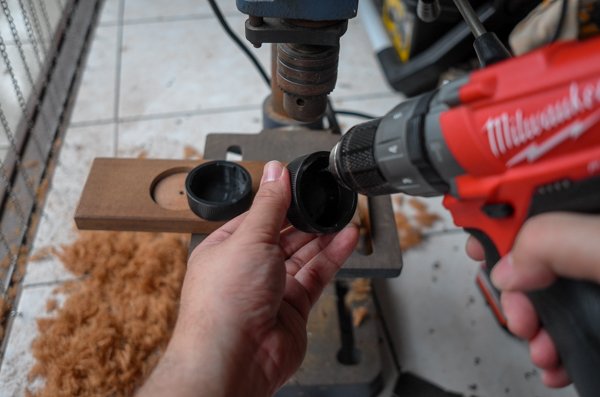
B4. Do the same for the
other rear lens cap.
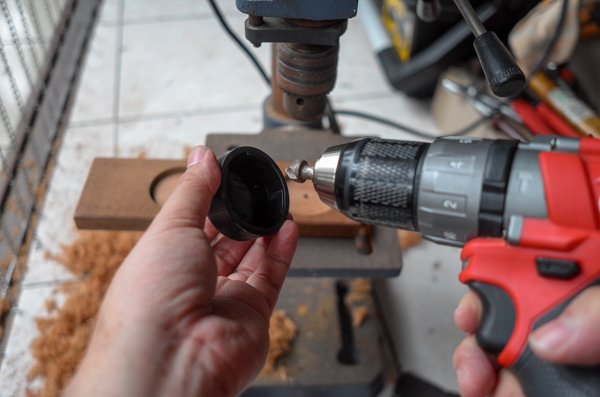
B5. Use a countersink bit
to widen the hole on the inside of the lens cap so that the screws will sit as
flush as possible to the inside surface once it is fully screwed in. If the
screws are not mounted flush, they may come in contact with your lens flange.
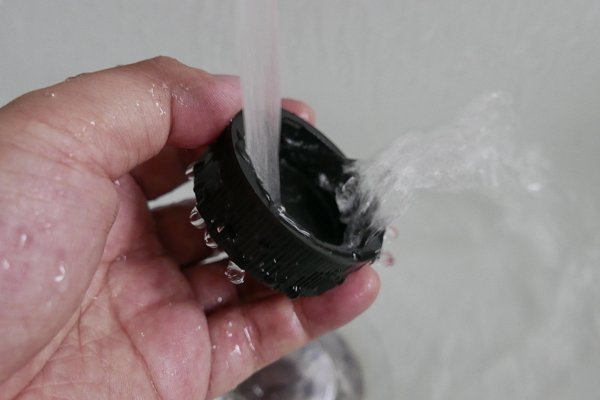
B6. Rinse the rear lens
caps thoroughly under running tap water to clear off all saw dust and debris,
and then wipe completely dry.
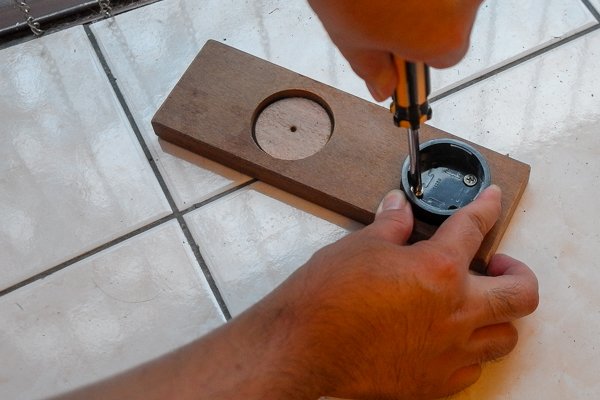
B7. Once the holes are
finished properly, screw them onto the wood block. As an option, you may also
use hot glue to fill any gap between the rear lens caps and the wood block, but
I have not found this to be necessary. The screws alone hold the lens caps down
just fine, provided the crater has sufficient depth and has been done neatly.
We will now proceed to finish up some details on the lens caps.
C. Finishing Works on the
Lens Caps
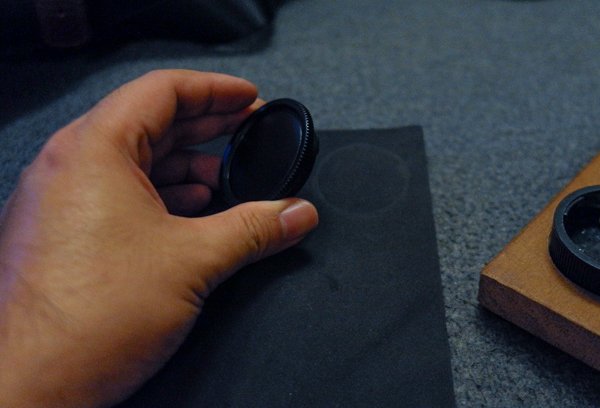
C1. With the rear lens cap
cover, mark a circle on the foam sheet. I found that I was able to get the
circle by pressing the cover on the foam sheet. If your foam sheet cannot be
imprinted in this manner or if you do not have the cover, you can scribe out a
circle of about 43mm in diameter with a pencil.
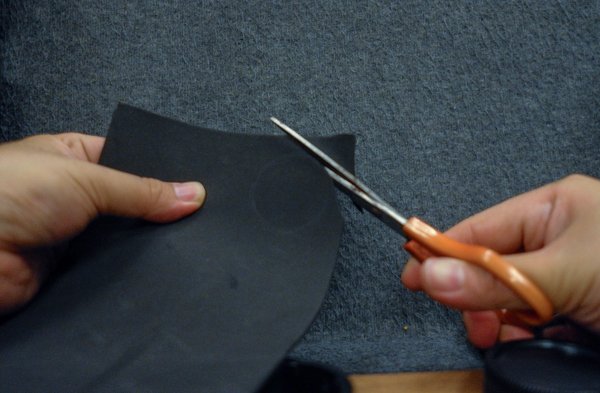
C2. Cut out the circle on
the foam sheet with a pair of scissors.
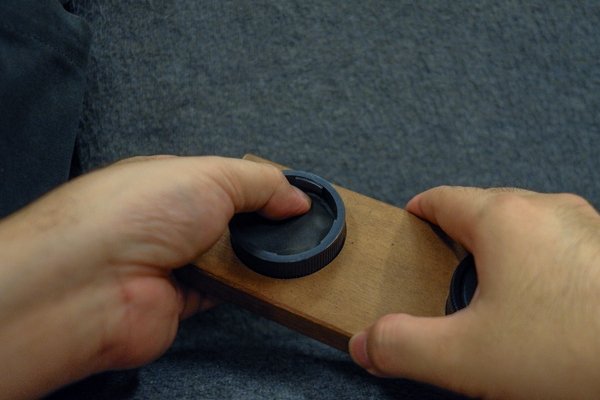
C3. Place the circular
foam sheet on the inside of the rear lens cap. If your cut-out is accurate, the
foam sheet should be able to stay firmly in place without moving around or
falling out of the lens cap. I would advise against using any adhesive here as
any residual VOC could cause harm to internal lens coatings. If this is not a
concern for you, be certain to use VOC-free adhesives.
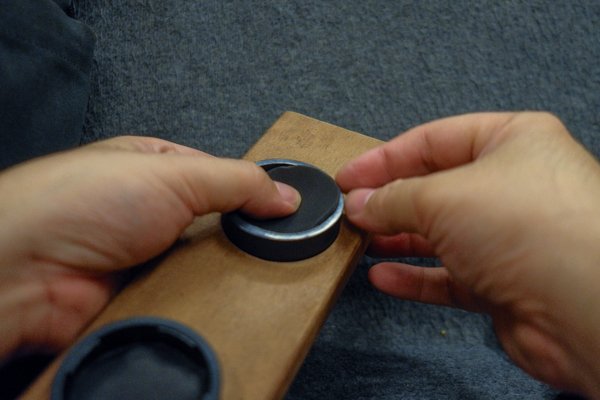
C4. Repeat the steps above
for the other lens cap.
D. Completion of the Leica
M Lens Holder
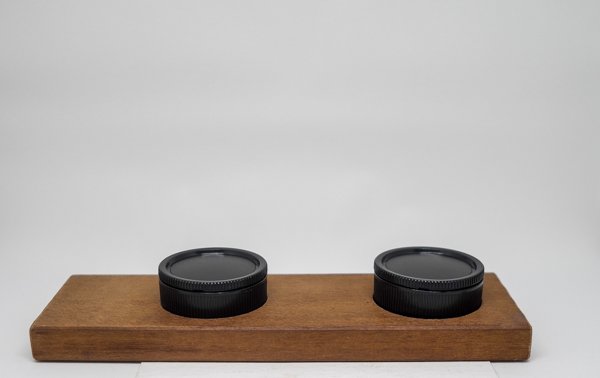
D1. This is the completed
Leica M Lens Holder. The covers are kept on when not in use to keep dust from
entering the rear lens caps. One side of the wood block was intentionally
designed to be longer, to sit below the camera body compartment in my bags. This
would help to keep the wood block more stable when it is placed in my bags. See
photos further below.
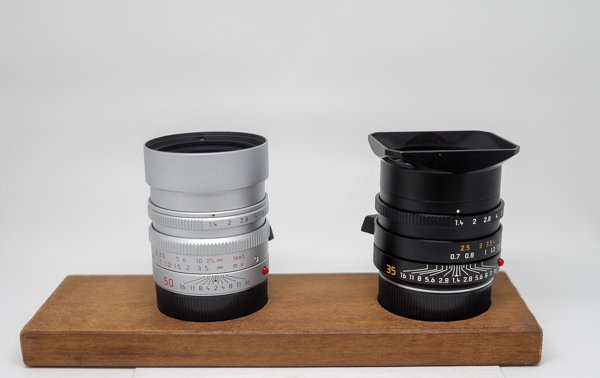
D2. It works with new
6-bit coded M lenses…
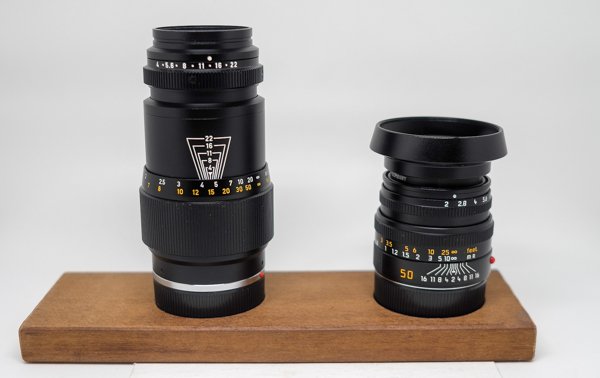
D3. …older non-6-bit coded
M lenses and recently 6-bit coded ones…
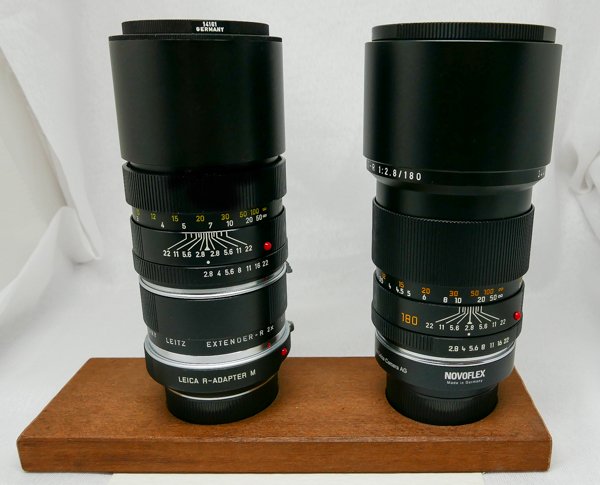
D4. …as well as R lenses
mounted on either the Leica R-Adapter M or the similar Novoflex version,
naturally.

D5. The completed Leica M
Lens holder sits snugly at the base of the ONA Prince Street bag. The extended
part of the wood block base goes below the compartment for the camera body on
the left side.
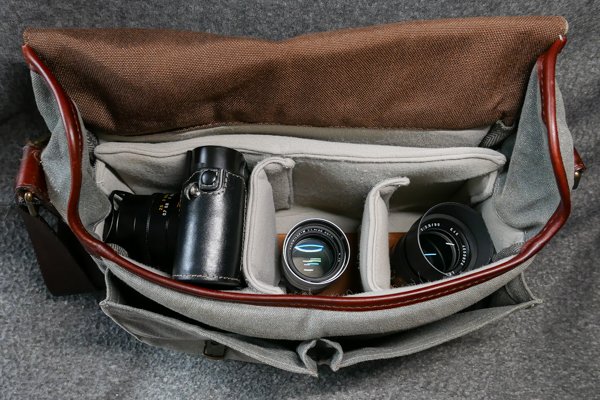
D6. The Leica M Typ 240 in
its place, with the Summilux-M 50mm f/1.4 ASPH and Summarit-M 90mm f/2.5.
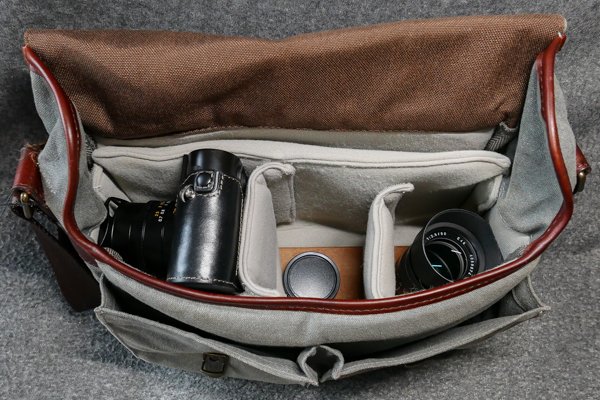
D7. I will usually leave
one holder empty – a vacant spot for the lens currently attached to the camera
body, before I unscrew the other lens and mount it on the M 240. This is all
done with the bag strapped over my shoulder when I am standing or walking.
Conclusion…Will There Be A
Version II?
“…all the brass in the
Leica M Typ 240 and chrome silver version Summilux-M 50mm f/1.4 makes for a
seriously hefty load, which adds to another worry about straps giving way.”
I have used the above
Leica M Lens Holder in a number of gigs and have found it to be very useful for
quick swapping of lens on my Leica M Typ 240. As mentioned earlier, this is in
part more necessary for me than for others as I do not use straps with my
cameras and thus have one less free hand to work with on the go. Nevertheless,
this may also be a solution for those who use straps on their cameras, and
prefer this quick method of lens replacement.
The lens holder solution
is not only for Leica, and may be applicable for other brands of
interchangeable lens camera. You will just need to get the appropriate rear
lens caps for your lenses, and the correct diameter for the Forstner bit. I
will be making another one soon to hold three M lenses that will fit into my
wider ONA Brixton bag, and maybe another version in the future to hold R lenses
without their adapters.
Meanwhile, keep shooting
and churning out beautiful images with your fabulous lenses!
For this and other articles by Devon Buy go here.
For this and other articles by Devon Buy go here.
For other articles on this blog please click on Blog Archive in the column to the right
To comment or to read comments please scroll past the ads below.
All ads present items of interest to Leica owners.
For other articles on this blog please click on Blog Archive in the column to the right
To comment or to read comments please scroll past the ads below.
All ads present items of interest to Leica owners.
_______________________________________________________________________
_______________________________________________________________________

Buy vintage Leica cameras from
America's premier Leica specialist

Buy vintage Leica cameras from
America's premier Leica specialist
Click on image to enlarge
Order: info@gmpphoto.com
Please make payment via PayPal to GMP Photography
Click on image to enlarge
Order: info@gmpphoto.com
Click on image to enlarge
Order: info@gmpphoto.com
Click on image to enlarge
Order: info@gmpphoto.com
Please make payment via PayPal to GMP Photography
Click on image to enlarge
Order: info@gmpphoto.com
Please make payment via PayPal to GMP Photography
Click on image to enlarge
Order: info@gmpphoto.com
Please make payment via PayPal to GMP Photography













No comments:
Post a Comment